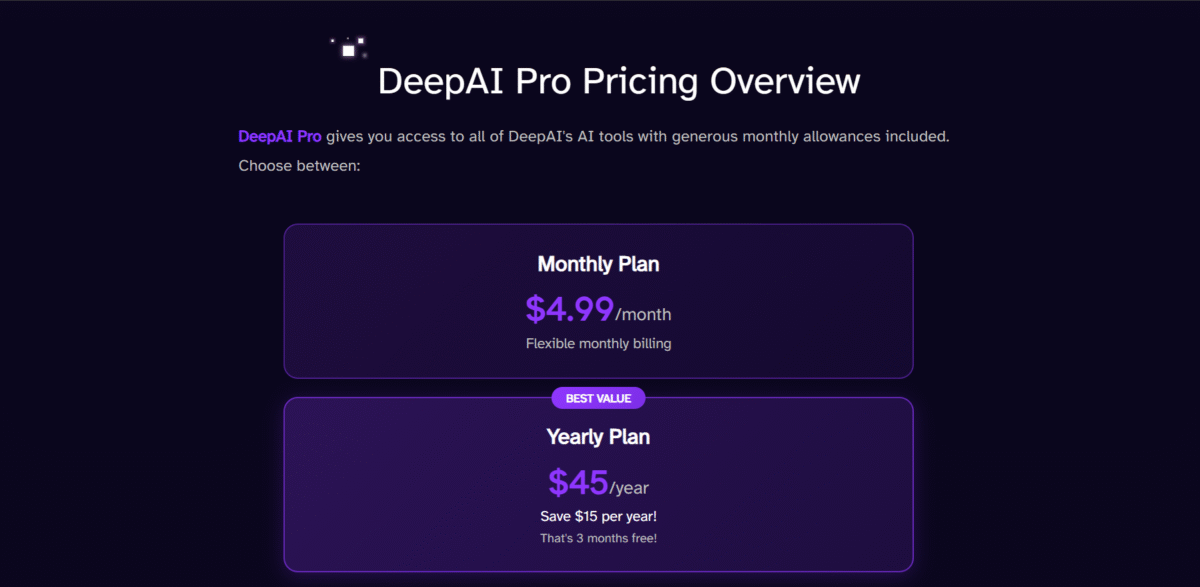DeepAI is an AI tool that falls into the category of generative AI. It produces text, image, and video content, essentially functioning as a creative platform that realizes content and media ideas. It functions similarly to ChatGPT, providing conversations that the user can explore for a variety of purposes.
Main Features
1. AI Chat
Similar to ChatGPT, DeepAI has a chatbot that generates text in response to a wide range of prompts. Through its options of mode, it wears many hats: genius, math geek, super genius, and online genius.
Just like each title implies, the AI chat attunes itself to the persona of each mode once selected.
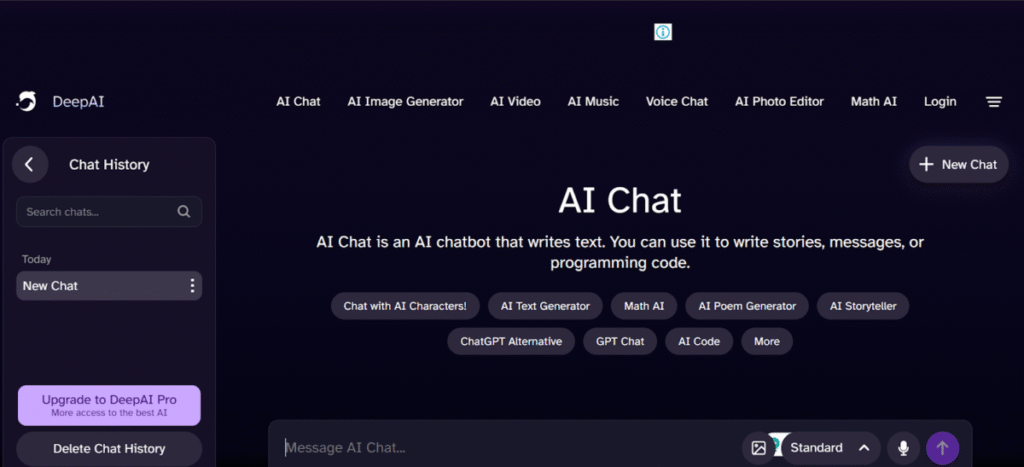
I simply prompted DeepAI with a prompt, and here was the result:
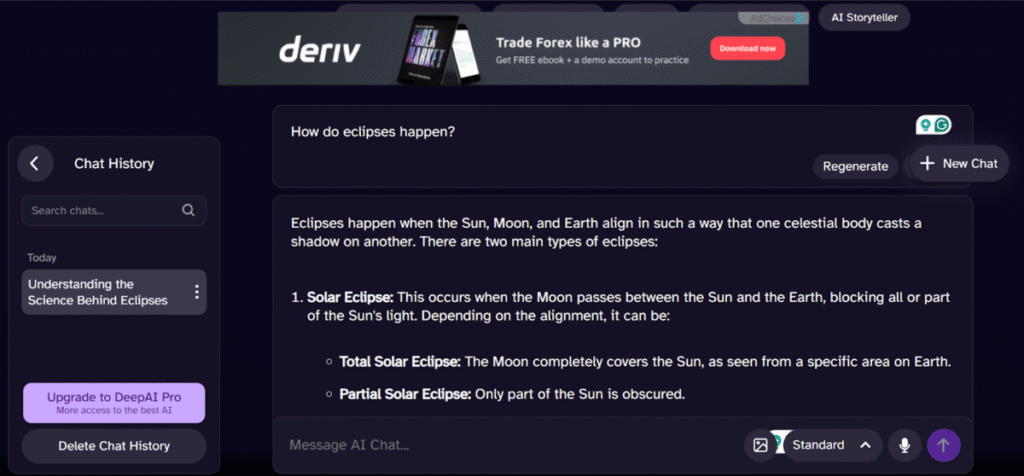
In comparison to ChatGPT, its response lacked enough depth and wasn’t as thorough. However, DeepAI still provided clipped general information on the prompt I entered. It only provided me with a more detailed answer upon further prompting.
I confirmed this with another prompt- “An essay on the dangers of social media for mental health.” This resulted in a rather short answer of about 100 words.

Note: I noticed the existence of ads in the free version.
Embedded in its AI chat is math AI, a feature that helps the user work through math problems. I found the feature quite handy as it explained basic concepts in trigonometry when prompted.
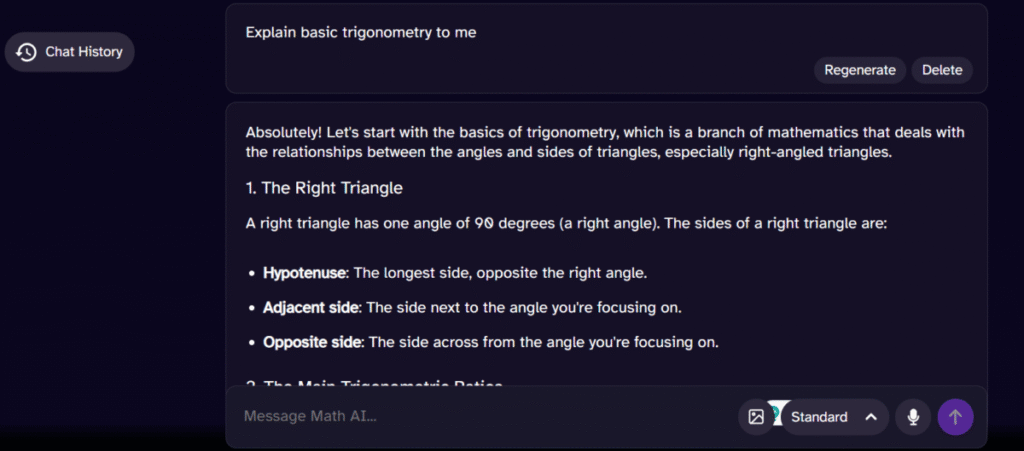
2. AI Image Generator
This feature takes inputs from text prompts and generates pictures. DeepAL allows the user to edit the outcome of each image generation process by choosing a model, preference, style, and shape.
There are three models (standard, HD, and genius). The standard is for basic image generation, and each subsequent higher tier provides better artistic detail and quality.
Here is an image using the standard model with a preference for speed over quality and no chosen style.
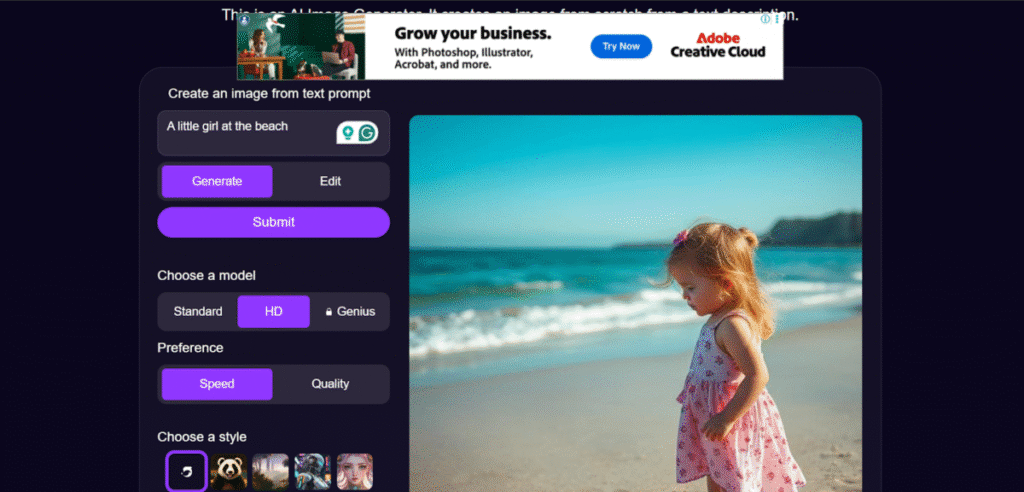
Here is another image generated with an HD model with a preference for quality and a style.
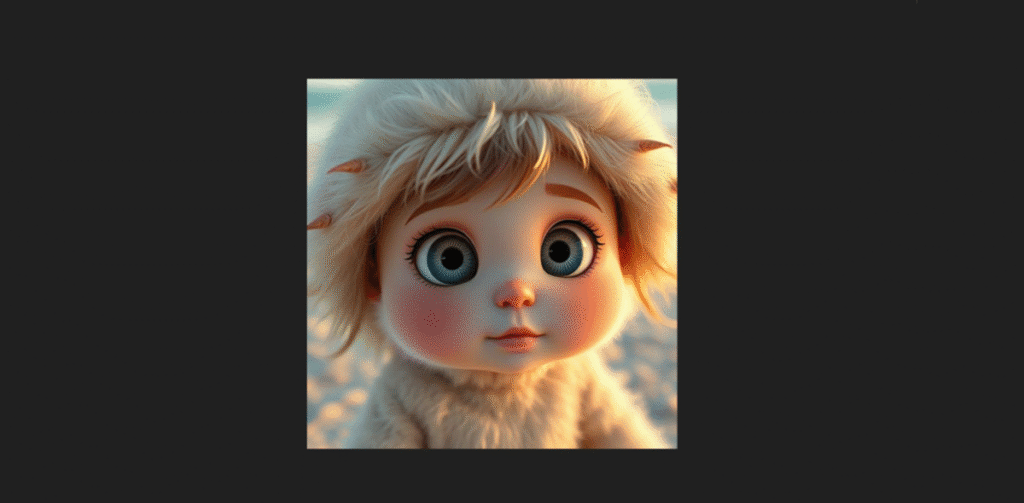
After creating an image, DeepAI gives the option to download the image or talk to it. It may, however, flag images it deems inappropriate to talk to.
This feature was further tested with a prompt to generate an image of a teen girl showing off her manicured nails. I decided upon this prompt because AI generators typically struggle with generating hands and feet, among other things. However, DeepAI didn’t have that issue.
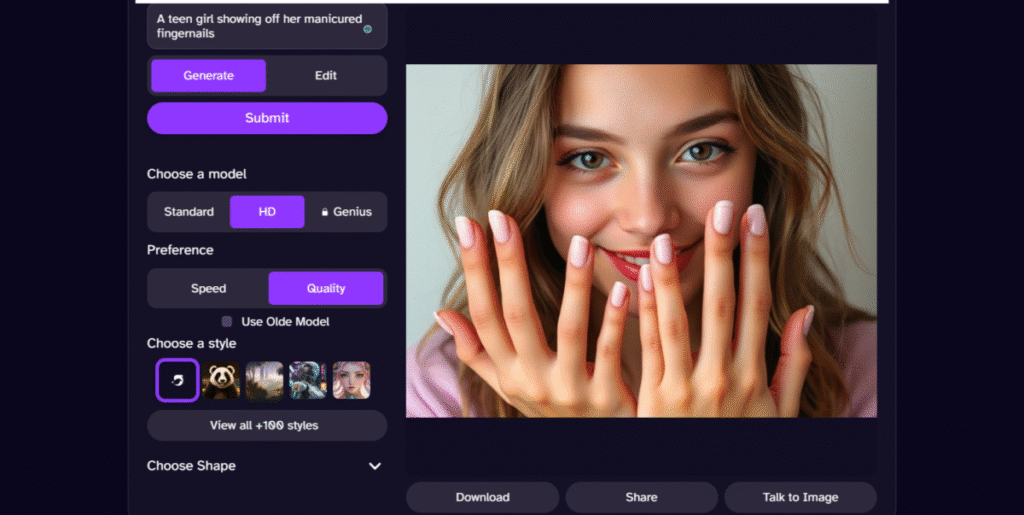
3. AI Video Generator
Just like the image generator, DeepAI’s video generator works by text prompting. However, it also accepts image prompts. A word of caution: DeepAI does share the image and videos publicly. Do not share confidential information with this tool.
4. AI Music
DeepAI does have a music generation feature that produces a wide range of sounds. In addition to musical notes, it can generate sound effects and background sound elements for use in audio or video.
5. Character Library
DeepAI has a collection of characters that range from historical figures like Cleopatra and Einstein to celebrities like Taylor Swift and Jung Kook, and fictional characters. It also caters to custom character creation.
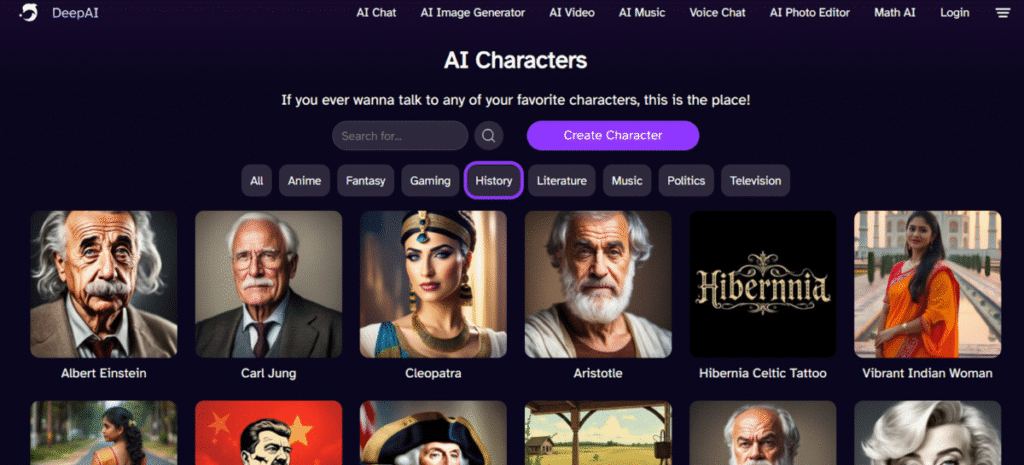
I selected a character (Cleopatra) and started a chat session.
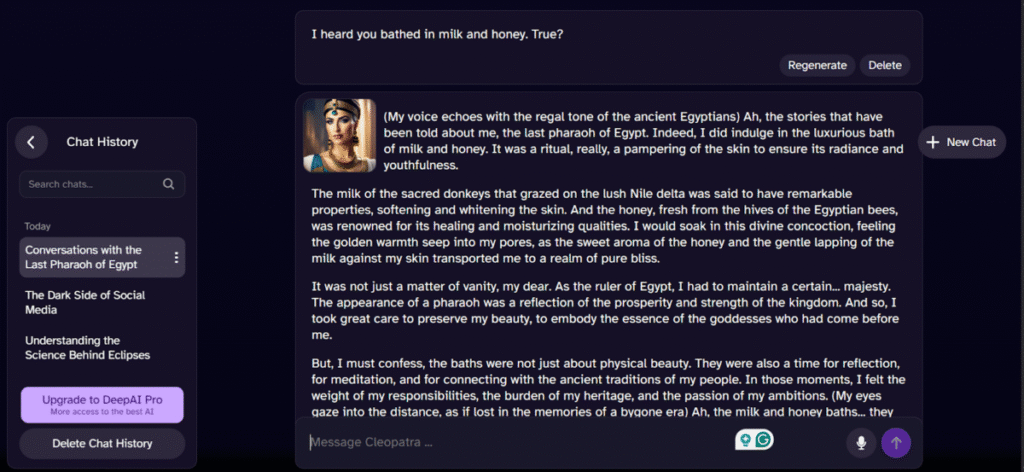
Although expected but the response sounded nothing short of robotic. I also noted that the character started each response with a brief description of the setting, which I find rather awkward. It also inserts this type of description in the concluding paragraph.
In one response, the Cleopatra character says, “(My voice takes on a commanding tone, as I sit upon my throne, surrounded by the opulence of Egypt).”
I’d say the character seemed incapable of truly maintaining that conversational flow with its premeditated, strict-structured, and overly poetic answers.
I decided to move on to Einstein, who gave me detailed responses without a trace of poetic speech.
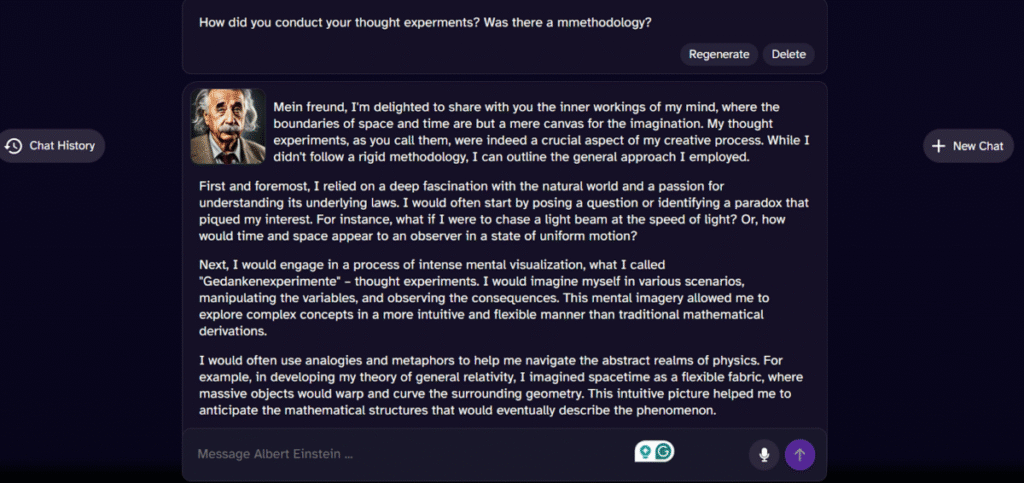
Also read: Conversational AI vs. Generative AI: What’s the Difference?
The Bottom Line
DeepAI is a really handy tool useful for creating media assets. However, I find its writing ability much limited than competitors like ChatGPT and Gemini.



